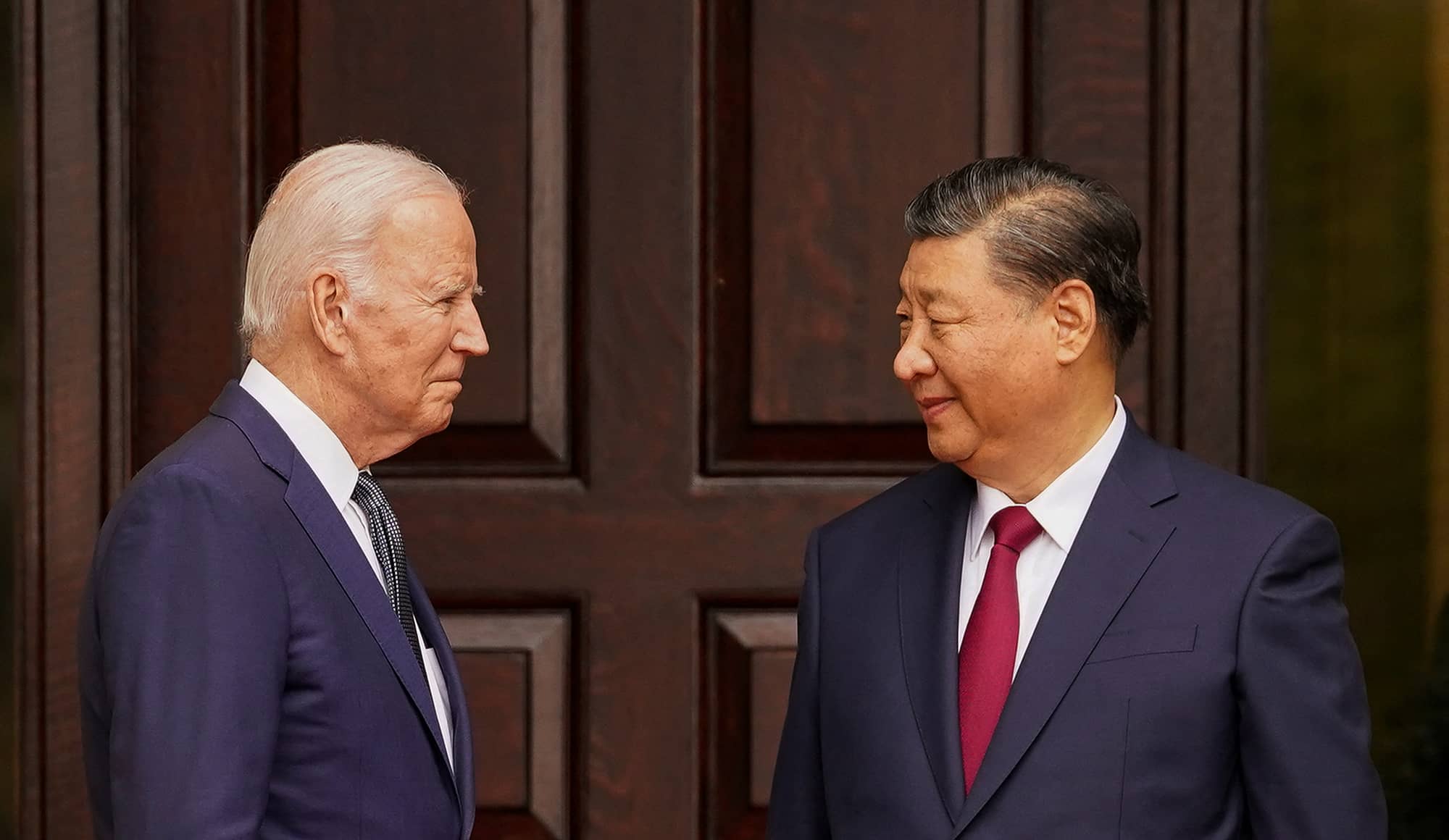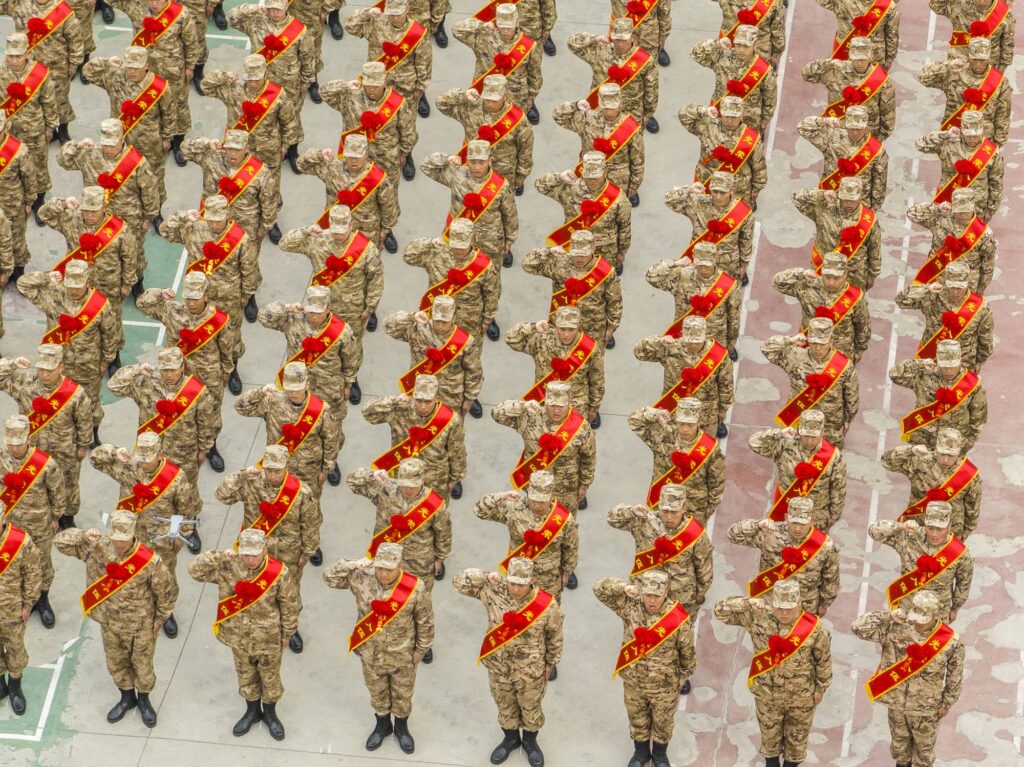The past two years have witnessed several failures of deterrence – Russia’s invasion of Ukraine in February 2022 and Hamas’ attack on Israel in October 2023. The invasion of Ukraine heightened global awareness that military force by a state actor is not a relic of the past and could occur in other flashpoints around the world, particularly Taiwan.
Since being named General Secretary of the Communist Party in 2012, Xi Jinping has made unification with Taiwan a legacy issue for his rule, terming it a component of his China Dream of National Rejuvenation. Xi designated the 100th anniversary of the founding of the People’s Liberation Army in 2027 a political milestone for developing military capabilities to deal with Taiwan. He has eliminated political rivals through anti-corruption campaigns, dismantled the collective-leadership system established under Deng Xiaoping (a reaction to Mao’s one-man rule) and overseen the world’s largest military buildup since World War 2. The question is what would deter Xi Jinping from using force against Taiwan.
The United States government is increasingly fixated on deterring China, recognizing that deterrence requires a combination of military capability, perception of credibility, and the ability to communicate with the adversary. Chairman of the Joint Chiefs of Staff General CQ Brown observed, “You’ve got to think about deterrence as a cognitive aspect. You’re trying to convince somebody, and if you don’t understand how they think and operate, it’s hard to deter them.”
A “New Era” under Xi Jinping
Is Xi Jinping different from other leaders when it comes to deterrence? According to academic theories of deterrence, the key factors that affect an ability to deter a leader include his or her rationality; assumption of unitarity; dyadic and triadic relationships; strategic intentions; and cost-benefit calculations. There is no question that Xi Jinping is rational, that he is a unitary actor in control of the political and military apparatus of the Party and State. He is comfortable dealing with the US-China dyad, as well as handling Taiwan’s leaders which he freely chooses to engage or isolate. Xi Jinping’s strategic intentions towards Taiwan are crystal clear, though there is some subjectivity in how he might calculate the costs and benefits of using military force. Understanding Xi Jinping’s perceptions of risk versus reward is central to understanding what would deter him from using force.
Taiwan is integral to Xi’s China Dream of National Rejuvenation and his declaration of a “new era for socialism with Chinese characteristics.” Unification with Taiwan is not just an unresolved aspect of the Chinese civil war. It is a source of the Party’s legitimacy, tied to the perceived success of China’s governance and governing model, reflecting Beijing’s antagonistic relationship with liberal democracies and rejection of Western political ideals. While Xi’s thinking certainly includes a balance of political and military calculations, political considerations undoubtedly outweigh military ones. Economic issues are also a factor (the economic cost of a conflict would be high for China) but based on Xi Jinping’s approach to China’s markets and economy today, he is clearly prepared to sacrifice some economic growth for political objectives.
Washington sees Taiwan as one issue in a complex bilateral relationship with China, while Beijing sees Taiwan as the issue. The US is committed under the 1979 Taiwan Relations Act to maintain the means to defend Taiwan and provide Taiwan with arms of a defensive character, infuriating Beijing which believes the US is using Taiwan as a strategy to weaken and contain China, and part of a larger contest between the two powers that comprises ideological, political, military, economic, and technological contest for supremacy.

Readiness of the People’s Liberation Army
Xi Jinping is close to having something that no previous leader has had – a viable military option in his Taiwan policy. Since 2000, the US Department of Defense has reported on the People’s Liberation Army (PLA) modernization in an annual report to Congress. Taiwan is the focus of a build-up supported by defense spending increases averaging around 10 per cent per year. After almost 25 years of expansion, the PLA is on the cusp of achieving Xi’s goal of having the ability to invade Taiwan. Having the capability does not necessarily mean Xi Jinping has the intent, but it likely affects his calculations.
A Taiwan operation is fraught with difficulty, presenting Xi with three key risk factors.
The largest is the complexity of conducting an amphibious invasion across the 100-mile wide Taiwan Strait. In 1944, the Joint Staff crafted Operation Causeway, the invasion of Taiwan (then called Formosa) as part of the island-hopping campaign leading to Japan’s home islands. President Roosevelt heeded the military’s advice that Formosa’s mountainous terrain would make an invasion too costly, and he opted to land troops directly on Okinawa instead. The risks of invading Taiwan have only increased, particularly as Taiwan’s military continues to adopt asymmetric defense strategies and invest in anti-invasion capabilities such as ground-launched anti-ship cruise missiles, sea mines, and unmanned vehicles.
A second area of uncertainty is the US response. After decades of operations in the Middle East, the US Department of Defense is increasingly fixated on readiness for a future war with China. From the Marines exchanging tanks and artillery for Marine Littoral Regiments armed with anti-ship cruise missiles, to the replicator program scaling up large numbers of low-cost unmanned systems, the US military is adapting itself to fight a peer-competitor. Security cooperation assistance to Taiwan has increased dramatically during the Biden administration, with increased levels and regularity of arms sales, transference of munitions and systems from US stocks, as well as increased training for Taiwan’s troops.
A third risk factor lies in potential political forces that could be unleashed inside the PLA. Xi has enacted a once-in-a-generation reform of the military command structure and imprisoned multiple PLA generals for corruption (a running joke in PLA circles is that Xi Jinping has killed more generals than the Japanese or Chiang Kai-shek.) He has ensured the Communist Party has complete control over the military, and that it continues to put the political security of the Party as its main mission. How the PLA would view the order to invade, or how it would respond to defeat, are risks that Xi must consider. Despite Xi’s centennial goals, the PLA may not be as ready to fight as Xi would like.

The Risk of Misperception and Miscalculation
To deter China from using force, one must take into account Xi Jinping and the Communist Party’s mindset, as well as appreciate differences in perception, interests, and respective cultural concepts for deterrence. As two American military scholars of China observed, “While Western thinkers will look for the linear cause to a problem, or expect a coercive effort to have a linear effect, the Chinese will evaluate the system and the external environment surrounding the issue along with the impact of these surrounding inputs.”
One key input Xi may consider is the negative political trendline in Taiwan itself. The outcome of the January 2024 presidential elections in Taiwan, as well as consistent polling of public opinion, reveal that the people of Taiwan no longer self-identify as Chinese and there is virtually no support within Taiwan for unification.
With little to no prospect for peaceful unification, China would need coercive efforts to deter Taiwan from moving towards independence. US efforts to preserve peace and stability might be superficially seen as a common interest with Beijing, but it is increasingly apparent to Beijing that efforts to preserve the peaceful status quo bring it no closer to its desired end state of unification and only create time and space for what it calls “Taiwan independence forces” to ensconce Taiwan’s de facto independence. While the US focuses on deterring China from using force to create space for a future peaceful resolution to the satisfaction of people on both sides of the Strait, China increasingly sees its non-military or “grey zone” coercion efforts failing and the prospect of unification becoming more remote, leaving threats of the use of force as its main means of deterring Taiwanese independence, which explains Beijing’s insistence that it will not renounce such use.
Western and Taiwanese theorists have floated various conventional military strategies for Taiwan including “Hard ROC 2.0” and the Overall Defense Concept, but strengthening conventional military capabilities are not sufficient to deter Beijing on their own. There is also the dubious “Silicon Shield” concept which posits that Xi will be deterred and the world will come to Taiwan’s defense because of its semiconductor industry. Unfortunately for Taiwan, chips are fungible, and Xi’s political calculation towards Taiwan is not part of an industrial strategy. In addition, the credibility of US security commitments may be measured by US allies in terms of support for Taiwan, but it is not measured in chips.
Deterrence is not measured in chips but it can be measured in nukes. China could miscalculate the credibility of its own deterrence against Washington. Despite Beijing’s “no first use” pledge, PLA General Xiong Guangkai once told US diplomat Chas Freeman that he thought, “Americans care more about Los Angeles than they do about Taiwan,” implying that China might use nuclear weapons against US cities if Washington intervened militarily in a Taiwan invasion. Escalation is another area where deterrence could spectacularly fail. Extensive unclassified writings by PLA institutions such as the Academy of Military Science and individual officers discussing the PLA’s views of deterrence, include unique and little-understood concepts of offensive and defensive forms of deterrence, and the use of escalation and limited, or pre-emptive strikes to deter. There is no possibility Washington would interpret pre-emptive strikes as intention to prevent a conflict, however, underscoring the potentially horrific consequences of misperception and miscalculation.

Is Xi Jinping deterrable?
There may be no greater challenge in the next decade than preventing the outbreak of conflict over Taiwan. Appreciating cultural differences and perspectives in both Beijing and Washington will be critical for understanding deterrence dynamics. Despite being a rational actor, Xi Jinping may determine that the correlation of forces on Taiwan are inexorably working against him, threatening the Party’s survival, and leaving him no choice but to use force, despite the uncertainty of success and certainty of the tremendous costs. Xi Jinping may not be easily deterrable, but it is worth reminding ourselves that up to now, deterrence has worked. US officials often repeat the mantra that war with China over Taiwan is neither imminent nor inevitable, revealing their confidence that deterrence will continue to prevail.
The US cannot, however, be complacent. Understanding what deters Xi Jinping (not just mirror imaging of what would deter us) is vital. Conveying US resolve to intervene in the event of a threat to Taiwan is a challenge for Washington. Not having allies makes it difficult for Beijing to understand the encumbrances of Washington’s alliance network. Taiwan is the canary in the coal mine for US security commitments to all its allies: failure to defend democratic Taiwan against communist China would end Washington’s credibility with its allies globally, potentially driving Japan and South Korea to develop their own nuclear deterrent, and leaving smaller states throughout Asia to re-align their security relationships towards China. Deterrence cuts both ways, and could come down to a contest of resolve between two leaders facing stark choices about the future success or decline of their nations.

